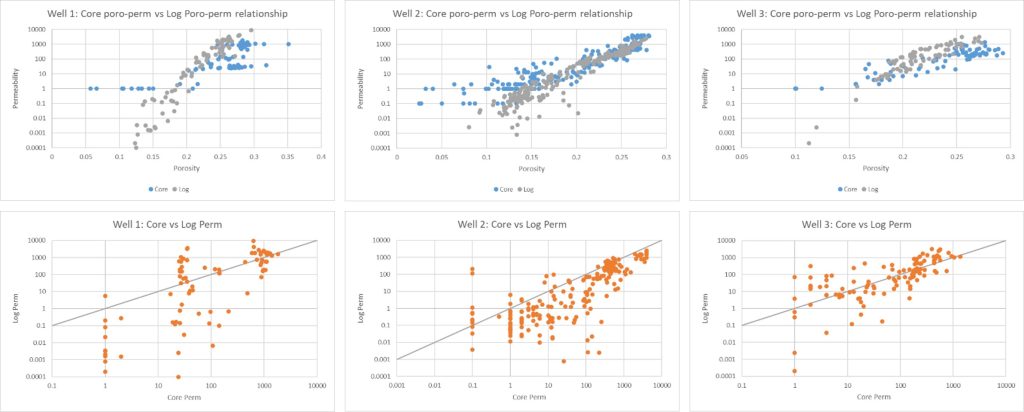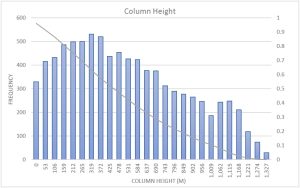In the world of subsurface engineering, the quest for maximum production efficiency is a shared endeavour between geoscientists and reservoir engineers (plus others in the petroleum engineering realm). This final blog of the series explores the strategies that enhance subsurface understanding, enabling optimisation of oilfield production through the combined expertise of the subsurface workforce.

The Synergy in Action: Collaborative Strategies
When geoscience and petroleum engineering join forces, a powerful synergy emerges. This collaborative effort leads to optimised production through a number of different workflows.
Well Placement and Completion Strategies
In green fields, and relatively underdeveloped fields, geoscientists identify sweet spots within reservoirs based on extensive geoscientific studies leading to static geological models. Reservoir engineers, in conjunction with information from the petrophysicist, then leverage this insight and enhance the studies through dynamic analysis to ensure the location and volume in the sweet spots are “truly sweet”. With the help of other disciplines, the best well design is constructed to target these optimal zones, ensuring maximum resource recovery.
Enhanced Sweep Efficiency
In collaboration with geoscientists, reservoir engineers conduct detailed analyses to identify areas of bypassed oil within the reservoir. These often-overlooked zones hold untapped potential, providing focus areas for resource optimisation. By characterising these regions through dynamic reservoir modelling, the team can devise strategies to recover these additional resources.
Building upon these analyses, reservoir engineers can implement advanced techniques such as waterflooding and enhanced oil recovery (EOR) to further enhance sweep efficiency. This strategic approach aims to maximise the recovery of resources, resulting in a higher percentage being extracted. These workflows can elevate the economic value of the field, although additional production has to be balanced against methodology, cost, and effectiveness of the chosen strategy.
Recalibration of Numerical Simulations and Classical Engineering
In the dynamic realm of subsurface engineering, the collaboration between geoscientists and reservoir engineers extends to the recalibration and reconciliation of numerical simulations with classical engineering principles. This critical phase involves aligning the insights gained from advanced numerical models with the practical knowledge derived from traditional engineering methodologies.
Geoscientists provide intricate geological interpretations, and reservoir engineers leverage this information to create detailed numerical simulations, predicting reservoir behaviour under various conditions. However, the real-world conditions often have nuances that numerical models might not fully encapsulate. Through a process of recalibration, the subsurface workforce ensures that the numerical simulations align closely with the observed performance of the reservoir. This involves a meticulous comparison of simulation results with the actual production data and reservoir performance.
Classical engineering principles, grounded in years of industry experience, contribute a pragmatic perspective to this recalibration process. The hands-on knowledge of reservoir behaviour, well performance, and fluid dynamics allows engineers to identify discrepancies and fine-tune numerical models accordingly.
Case Studies: Turning Collaboration into Results
Real-world projects demonstrate the tangible impact of collaborative efforts on understanding the subsurface reservoir and performing production optimisation:
Case study: Integrated Dynamic Modelling for an Asian Field
Merlin’s reservoir engineer, Ben, has brought with him significant experience from Asia where he has undertaken numerous simulation projects. For one such project he was part of a team bringing a fresh perspective to a field where achieving an accurate history match had been challenging. By leveraging insights from existing interpretations and combining it with personal expertise, a holistic evaluation approach was taken to resolve the mismatch.
The first step in the process was to audit the input data used for the project. During this step a number of discrepancies were observed including variations in perforation depths, meter-to-feet conversion inaccuracies, and discrepancies in well records. Additionally, inconsistencies in petrophysical properties, such as log permeability not aligning with core permeability at similar depths, posed challenges. The structural interpretation of the faults and their sealing characteristics added additional complexity to the model.
An illustrative example of permeability correlation is depicted in the cross plot below. While it is generally sufficient to compare the correlation on log tracks, a more bird’s eye view on these properties can potentially help in identifying areas for improvements.

Having resolved the input data concerns, the team kickstarted the modelling phase of the project with a one day workshop. The workshop served as a collaborative platform to clarify the requirements of the dynamic numerical model, draw lessons from past efforts in history matching, identify and quantify uncertainties in both static and dynamic modelling, establish a proposed work programme, agree on modelling tools, and outline a feasible timeline.
The success of the history matching and the generation of multiple forecast scenarios is testament to the fact that teamwork, planning and well-orchestrated scoping is of the highest importance. By discussing the requirements for the model upfront, the work was able to meet the expectations of all stakeholders. This project showcases the importance of perseverance and collaboration in overcoming challenges and achieving success in complex reservoir engineering projects.
Merlin’s Integrated Approach: Maximising Oilfield Potential
At Merlin Energy Resources Limited, we understand that the true potential of an oilfield is unlocked through the collaborative efforts of geoscientists and reservoir engineers. Our team is dedicated to leveraging the strengths of both disciplines, ensuring that every project reaches its maximum potential.
Through strategic well placement, advanced reservoir management techniques, and real-time data analysis, we drive sustainable and efficient resource recovery.
For more information about Merlin Energy Resources Limited and our expertise in subsurface engineering, visit our website.



